Indian Views: Works by Travelling ArtistsThe Editorial Team August 01, 2024 What made travelling India such an attractive prospect for European and American artists in the nineteenth and early twentieth centuries? At the forefront of several global transformations of leisure and travel, the artists highlighted in DAG’s exhibition Destination India, accelerated the process of creating modern tourist industries, imbuing landscapes, monuments and sites with romantic splendour and compelling narratives, often leaving just enough for the imagination to warrant a visit! In this photo-essay we take a closer look at four such artists. |

William Simpson
Large Deodar Tree. Kunawer, Himalays (Himalayas) (detail)
Watercolour and graphite on paper, 10.5 x 14.2 in.
Collection: DAG
|
William Simpson (1823-1899) |
|
|
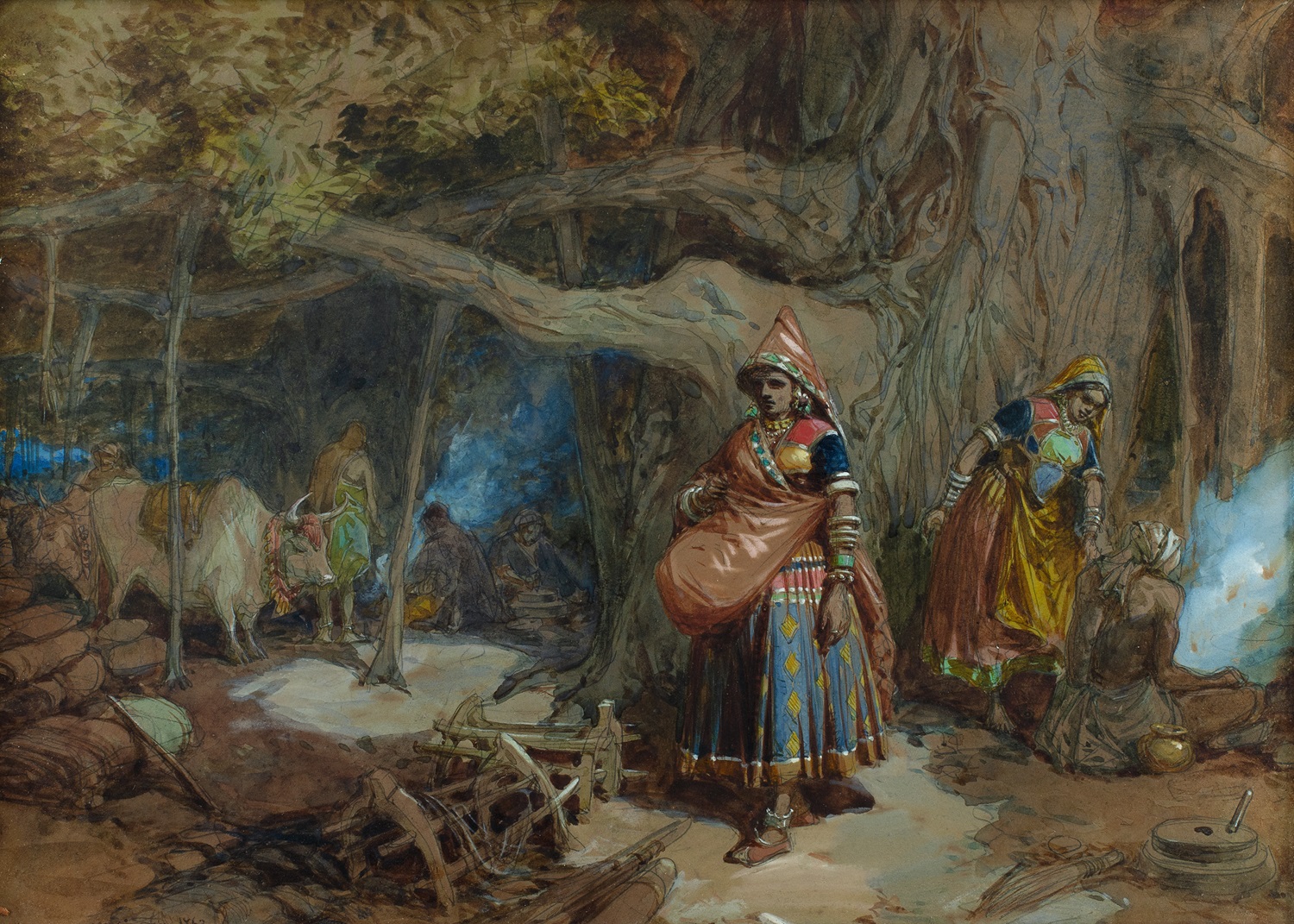
William Simpson
The Brindjarries
Watercolour and graphite on paper, 1863, 9.7 x 13.7 in.
Collection: DAG
William Simpson was a prominent Scottish artist known for his detailed watercolours and sketches of India, which he created during his extensive travels across the subcontinent in the late nineteenth century. His work is notable for its vivid representation of Indian landscapes, architecture, and cultural practices, particularly during a time of significant political and social change in the region. Simpson arrived in Calcutta (now Kolkata) in 1859, shortly after the Indian Rebellion of 1857. His initial purpose was to document the aftermath of the uprising and to create a comprehensive visual record of India. He travelled extensively throughout the country, covering approximately 22,570 miles, and visited various regions including Lahore, Peshawar, and the Himalayan foothills. His travels were not only focused on major cities but also included remote areas, where he sought to capture the ‘real India’ beyond the colonial gaze. |
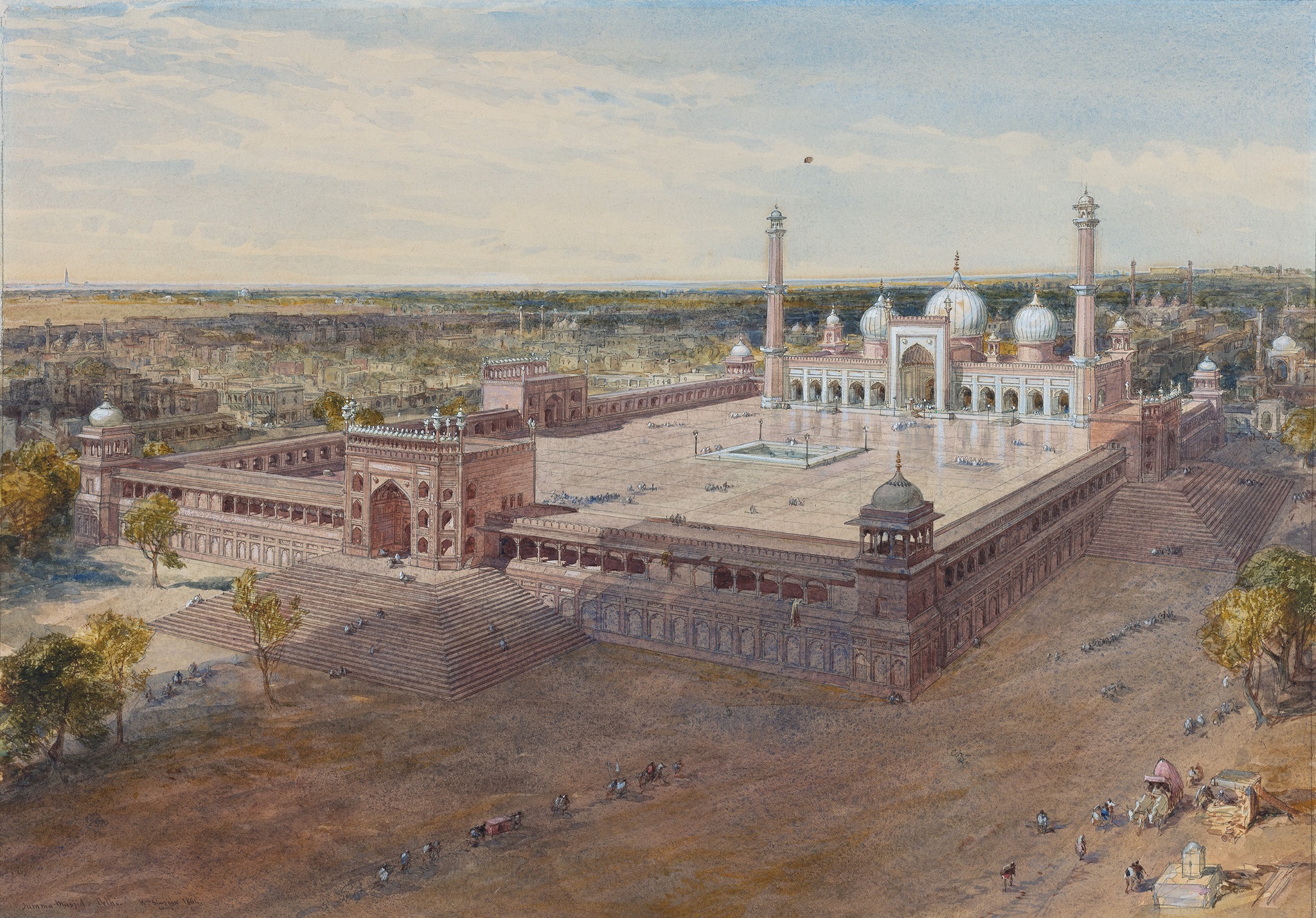
William Simpson
Jumma Musjid, Delhi
Watercolour on handmade paper, 1864, 14.2 x 20.5 in.
Collection: DAG
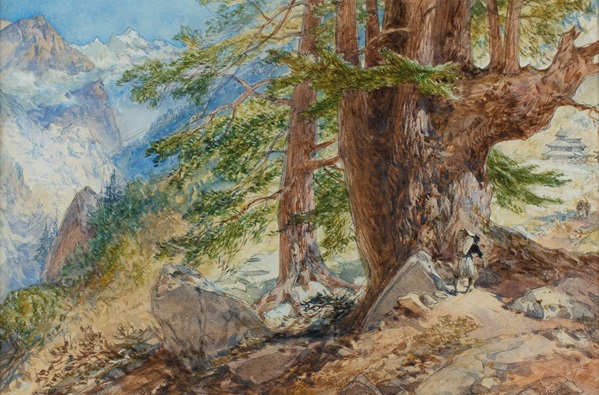
William Simpson
Large Deodar Tree. Kunawer, Himalays (Himalayas)
Watercolour and graphite on paper, 10.5 x 14.2 in.
Collection: DAG
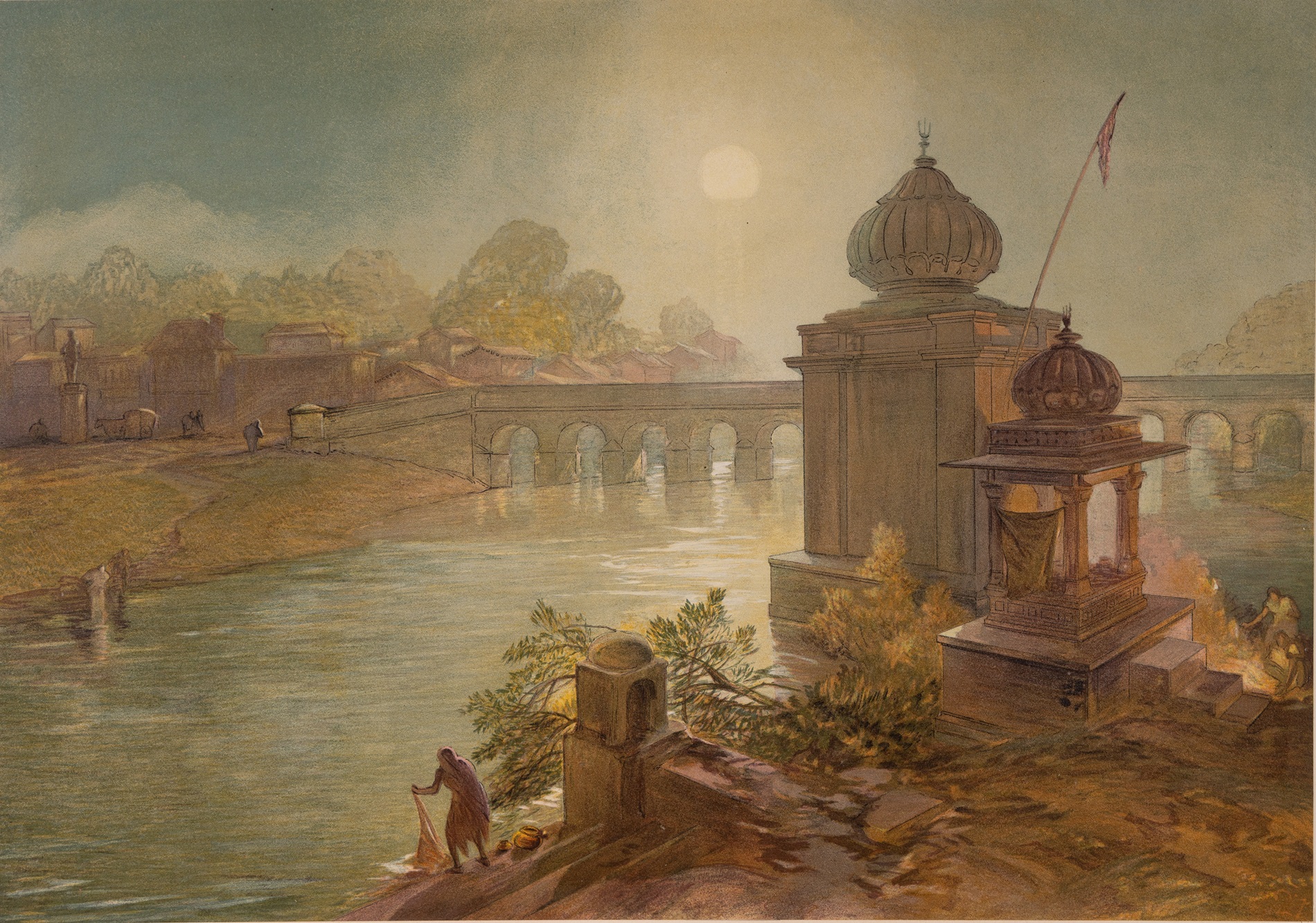
William Simpson
Indore
Chromolithograph on paper pasted on paper, 1867, 14.0 x 19.7 in.
Collection: DAG
Simpson's artistic style is characterised by its romantic and evocative quality. His watercolours often depict vibrant scenes of Indian life, including religious ceremonies, local customs, and the daily activities of various communities. His paintings frequently highlight the architectural beauty of historical sites, such as temples and forts, reflecting a deep appreciation for India's rich heritage. Simpson's detailed sketches served as preparatory studies for his finished works, which he completed upon returning to England. His meticulous approach combined with his ability to capture the essence of the landscapes and the people made his works highly regarded in art circles. |
|
Horace van Ruith (1839—1923) |
|
|
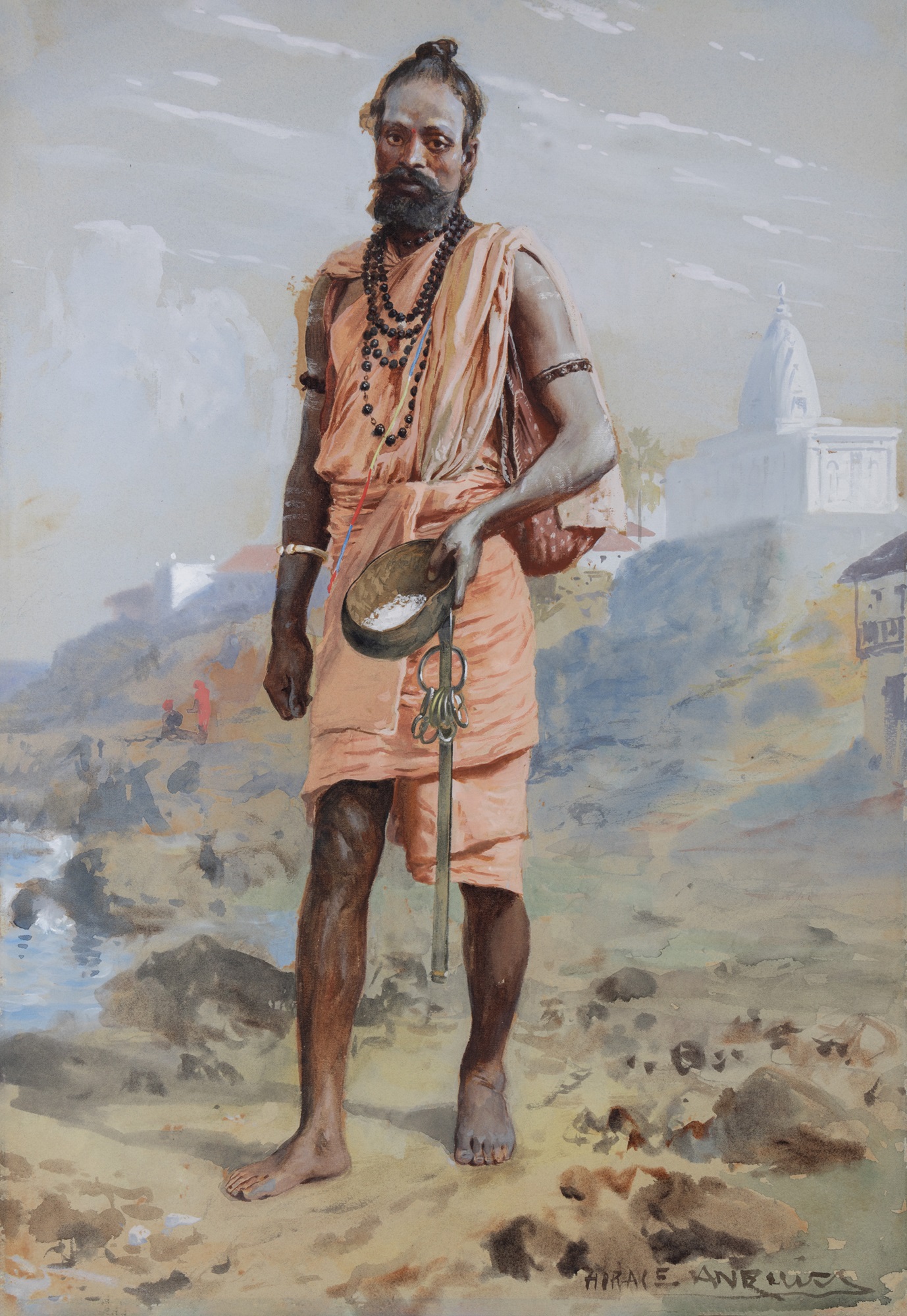
Horace van Ruith
Shaivite Ascetic
Watercolour on board, 21.0 × 14.5 in.
Collection: DAG

Horace van Ruith
Maratta Head
Watercolour on handmade paper, c. 1880, 3.7 x 9.7 in.
Collection: DAG
Horace Van Ruith was a British-German painter active in the late nineteenth and early twentieth centuries, known for his evocative paintings of India. His works often depict scenes of daily life, cultural practices, and the rich landscapes of the subcontinent. Notable pieces include ‘A Kattiwar Sentry’ and ‘Worshippers,’ which showcase his interest in capturing the essence of Indian society and its traditions. Van Ruith's art reflects a blend of Western artistic techniques with Indian themes, highlighting the vibrant colours and intricate details of his subjects. His paintings serve as historical documents, offering insights into the cultural diversity of India during the colonial period. When Arthur Crawford, Bombay’s (now Mumbai) first and controversial Municipal commissioner and collector, wrote his memoirs Reminiscences of an Indian Police Officer (1894), Ruith provided the illustrations. |
|
Walter Crane (1845-1915) |
|
|
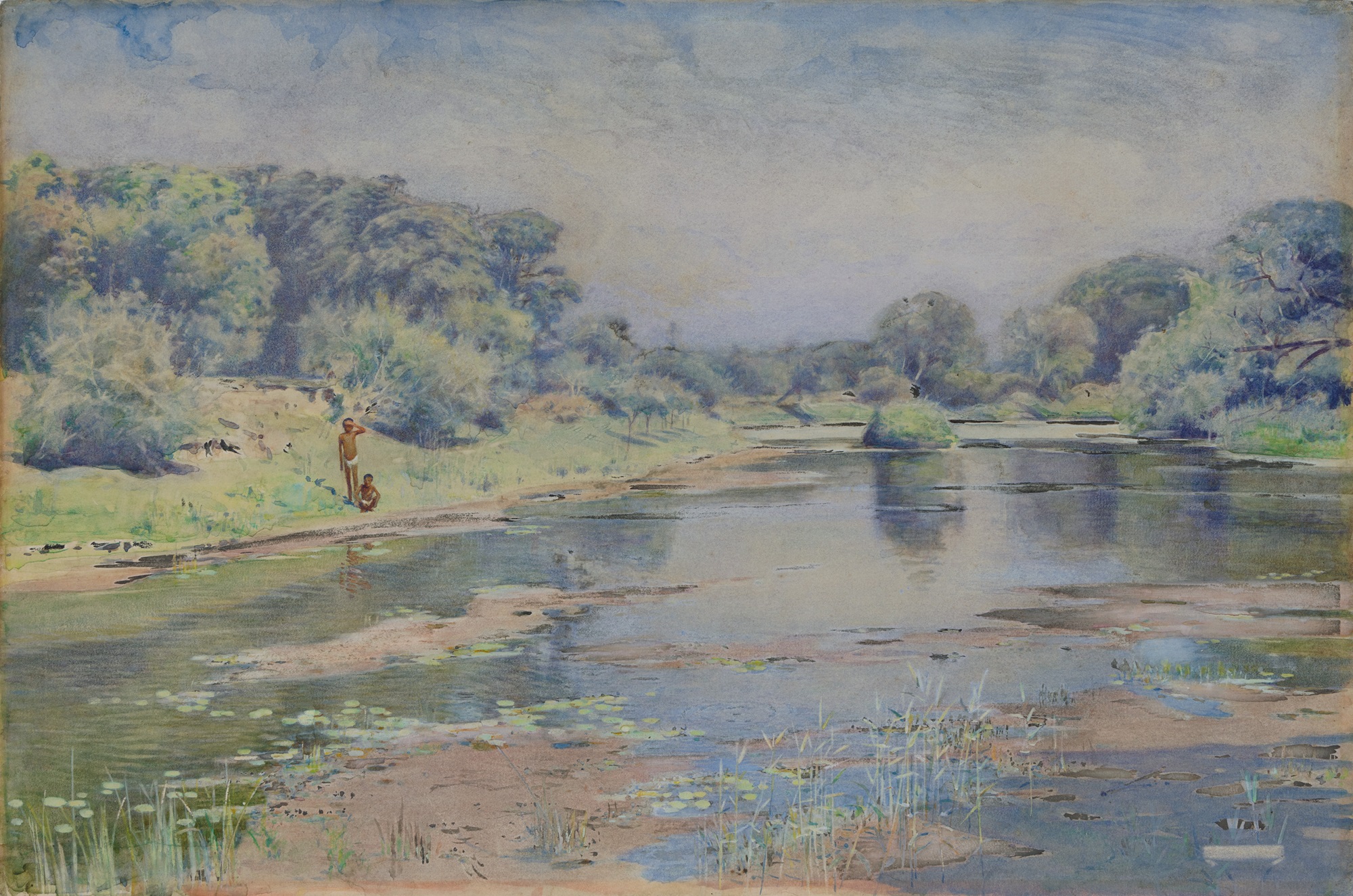
Walter Crane
Ceylon Landscape
Watercolour on mount board, 1907, 14.5 x 21.2 in.
Collection: DAG
Walter Crane was a prominent English artist and book illustrator known for his paintings depicting scenes from Indian mythology and folklore. While he did not travel to India himself, Crane's works were influenced by the growing interest in Indian culture and the availability of Indian art and literature in Victorian England. One of Crane's notable works is ‘The Renaissance of Venus,’ which incorporates elements of Indian art and design. His illustrations showcase his ability to blend Western artistic styles with Indian themes and motifs. Crane's paintings often feature vibrant colours, intricate patterns, and mythological figures, reflecting the rich cultural heritage of India and Europe. Although Crane's works were not created in India, they contributed to the Western understanding and appreciation of Indian art and mythology during the late nineteenth and early twentieth centuries, especially among common readers. |
|
Olinto Ghilardi (1848-1930) |
|
|
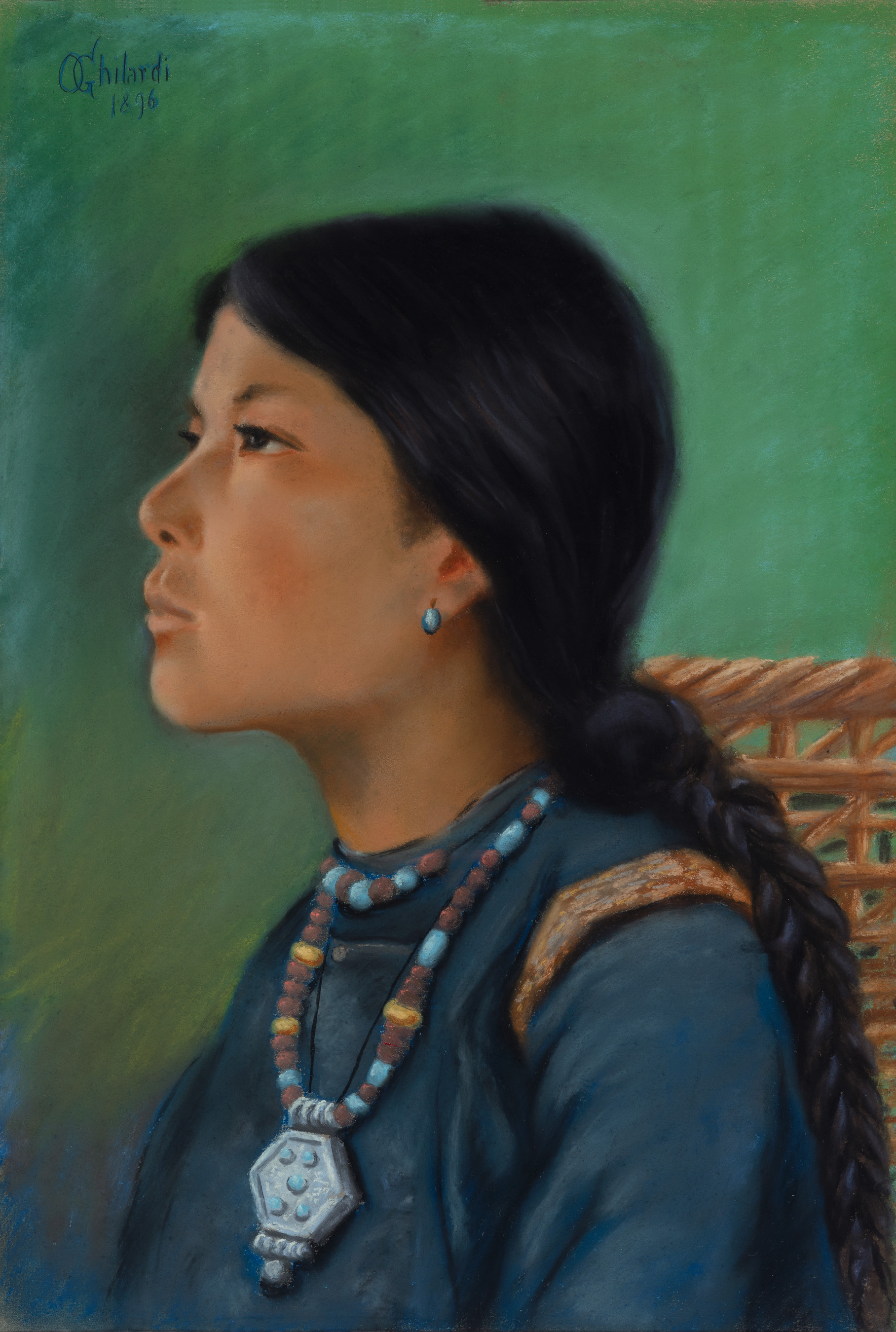
Olinto Ghilardi
Head of a Young Woman
Pastel on paper, 1896, 22.0 x 15.0 in.
Collection: DAG
Olinto Ghilardi was an Italian artist who significantly influenced the Indian art scene during the late nineteenth and early twentieth centuries. Arriving in Calcutta (now Kolkata), he introduced European artistic techniques and mentored notable figures like Abanindranath Tagore, a key player in the Bengal School of Art. His influence extended towards disseminating the much sought-after ‘Italian training’ in the Indian art environment. As Partha Mitter writes, ‘It was after the arrival of the Italian teacher, the Chevalier Olinto Ghilardi, at the Calcutta art school in 1886, that an Italian training became a possibility. The members of the Bharatiya Shilpa Samiti (1893)—Annada Bagchi, Jamini Gangooly, Upendrakishore Raychaudhuri and Abanindranath Tagore—debated the question of sending art students abroad. Ghilardi advised them and arranged for students to go to Rome.’ |

Olinto Ghilardi
Portrait of Elderly Indians
Pastel on paper, 1900, 21.0 x 28.2 in.
Collection: DAG
Ghilardi's paintings often depict the diverse cultures of India, showcasing vibrant scenes of daily life and traditional practices. His pastel portraits, such as those of elderly Indians, capture the dignity and character of his subjects, reflecting a deep appreciation for Indian society. His works blend Western artistic styles with Indian themes, providing a unique perspective on colonial India. Ghilardi's contributions helped shape modern Indian art, making him a pivotal figure in the cultural exchange between Europe and India during a transformative period in history. |


